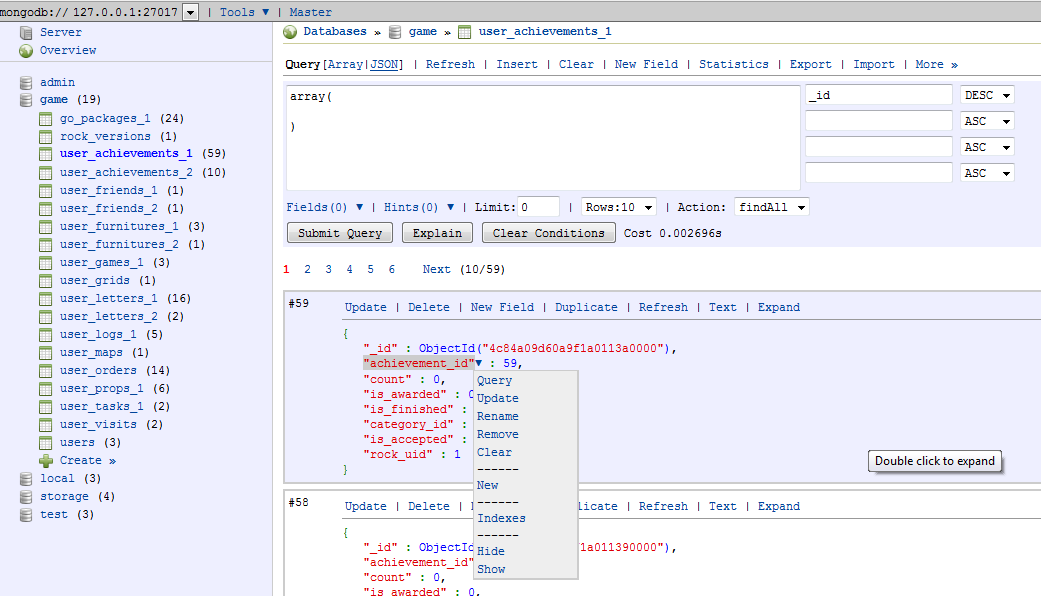RockMongo is a MongoDB management tool written by PHP5.
Through Rockmongo you can manage MongoDB services, databases, collections, documents, indexes, and so on.
It provides a very human operation. Similar to phpMyAdmin (MySql management tool developed by PHP).
Rockmongo download address: https://github.com/iwind/rockmongo
Main features: Use loose New BSD License Agreement Fast and easy to install Multilingual support (currently available in Chinese, English, Japanese, Brazilian Portuguese, French, German, Russian, Italian) System Multiple hosts can be configured, and each host can have multiple administrators Administrator password is required to log in to ensure the security of the database Server Server information (WEB server, PHP, PHP.ini related instructions.) Status Database information Database Queries, creating and deletin Execute commands and Javascript code Statistical information Collection (equivalent to a table) Powerful query tool Read data, write data, change data, copy data, delete data Query, create, and delete indexes Emptying data Bulk delete and change data Statistical information GridFS View chunks Download a file A Web server that can run PHP, such as Apache Httpd, Nginx… PHP-PHP v5.1.6 or later is required and SESSION support is required In order to connect to MongoDB, you need to install php_mongo Expansion Unzip it to your website directory Open config.php with editor and modify host, port, admins and other parameters Access index.php in a browser, for example: http://localhost/rockmongo/index.php Log in with a user name and password, default to “admin” and “admin” Start playing MongoDB!
3.42.1. Brief introduction ¶
3.42.2. Installation ¶
Demand ¶
Quick installation ¶